Students have a critical role and often find themselves at
the center of the most important collaboration activities. A large collaborative
experiment is a collection of hundreds of smaller experiments, with a common
physics goal and central organization. Those small experiments need to be done
by a few people, and are not too different from experiments done in smaller
in-house facilities. Students concerned about this should read through the past
graduate student thesis topics listed at the end
of this section.
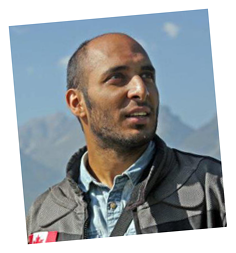
 Chanpreet Amole
(contact)
Chanpreet Amole
(contact)
I am currently working on the direct detection of Dark Matter with the PICO
collaboration. So far, I have been involved and taken a lead in various tasks
related to hardware design/assembly, experimental operations and data analysis
in the PICO experiment that is deployed in SNOLAB underground laboratory. Prior
to this, I did my masters at York University and worked in CERN on the ALPHA
experiment (anti-hydrogen production/trapping) to study fundamental symmetries
between matter and antimatter.
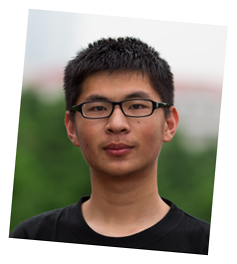
I'm a master student currently working on SNO+
experiment. My work right now is mainly concerned with 'finishing' fabrication
of umbilicals (remember to thank me for doing this when you came here...) &
'starting' data flow. I'm also responsible for developing sodium source for
liquid scintillator phase.
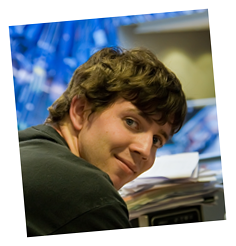
 Ryan Underwood
(contact)
Ryan Underwood
(contact)
I am a student working with SuperCDMS,
my work so far has consisted of assessing a two-template fitting model for
phonon pulses that come out of the detector. I have also done research at CERN,
and in modelling relativistic supernova shock propagation.
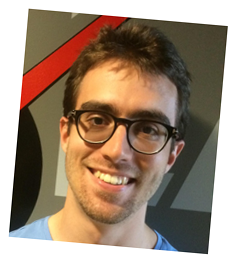
(contact)
Francisco Vazquez de Sola Fernandez

I am a PhD student, currently working on dark matter detection with NEWS-G.
My focus has been mostly on data analysis, especially on understanding the pulse
shape of our events for better characterization. I am now working on extracting
a limit on solar KK axions using the data from the previous NEWS-G experiment in
the Laboratoire Souterrain de Modane.
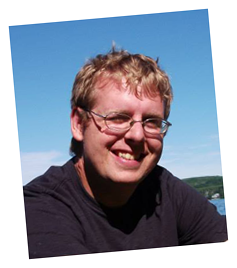
 Caleb Miller
(contact)
Caleb Miller
(contact)
I work on the SNO+ experiment,
and I am currently working on scintillator purification and radon background
modeling.
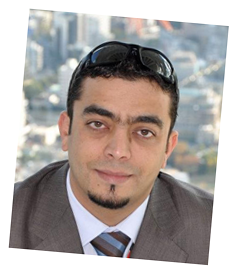
I am a master student currently working in
SuperCDMS. The main aim of the
experiment is to measure the recoil energy out of the nucleus due to collision
with Weakly Interacting Massive Particles (WIMPs) using highly sensitive
detectors.
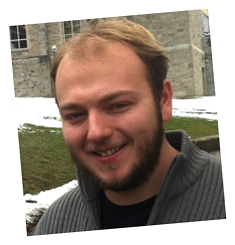
 Derek Cranshaw
(contact)
Derek Cranshaw
(contact)
I'm a master's student working on the
DEAP experiment. My current research is
essentially trying to understand the signal contributions from contaminants in
the detector using computer simulations. More specifically, I am working on
trying to understand the contamination profile based on comparing simulation and
real data, and developing ways to exclude contaminant decays events from dark
matter interaction events.
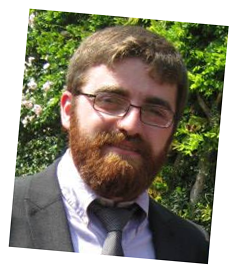
(contact)
Pietro Giampa

I'm a PhD candidate working on the DEAP-3600 experiment, which is currently
taking data in hope to find evidence for the existence of dark matter. My
involvement with DEAP-3600 ranges between various activity from R&D and
construction to different data analysis tasks. My primary focus is the
identification and reduction of alpha decays from the Uranium and Thorium
chains. Those type of decays could, in specific conditions, produce a signal
similar to what expected from dark matter. Prior to this, I did my masters at
Royal Holloway University of London where I was involved with another dark
matter experiment called DMTPC.
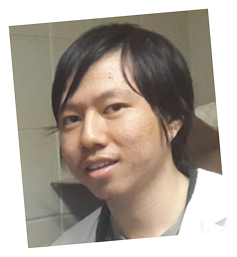
I am a Masters student working with the SNO+ Collaboration. I am currently
involved in scintillator purification and nitrogen source calibration for the
water phase of SNO+. I did my undergraduate studies in Mathematical Physics at
the University of Waterloo.
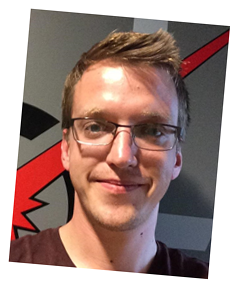
(contact)
Alexis Brossard

I am a PhD candidate working on the NEWS-G experiment. My work so far has
consisted of creating background simulations in order to understand data
acquired with detectors in underground laboratories. I am also involved in
building hardware of the detector, especially the design of the sensor to ensure
a good quality data, and to have a better understanding of the detector
response.
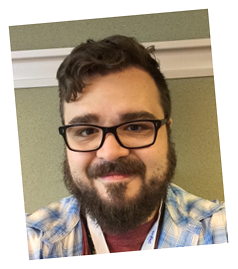
 Daniel Durnford
Daniel Durnford
I am a Master's student working on the NEWS-G direct dark matter search
experiment. My work has centered primarily on exploring new calibration
strategies for our detectors, and the estimation of radioactive contaminants and
backgrounds for our experiment. I am also helping to create a
simulation/likelihood analysis framework for our upcoming project at SNOLAB.
Prior to this, I did my undergraduate degree at the University of Alberta,
including work on the PICO and SNO+ experiments.

Mike Clark

I am a current PhD student working with Philippe Di Stefano and the NEWS-G
group with a focus on scintillation. I have performed experiments to understand
the scintillation properties of alkali halide crystals at low temperatures
motivated by their possible use in cryogenic dark matter experiments. I am also
working towards studying the scintillation light produced by the gaseous
detectors of NEWS-G.

 Marie Vidal
Marie Vidal
I did my undergraduate studies and Master's degree in France. My principal
interest in physics is the study of neutrinos. I have been working on this
particle for the past 4 years, and I am excited to pursue this research. My PhD
project in NEWS-G is related to the detection of the Coherent Elastic
Neutrino-Nucleus Scattering (CEνNS) using a gaseous detector close to a nuclear
power plant. My work is going to estimate the feasibility of such an experiment.
I am also involved in taking quenching factor measurements at TUNL of our gas
detector (S15).
Visiting Research Students
Chloé Bouard
(contact)
From the CEA Grenoble, DSM/INAC/SP2M/NM (NM is for Nanostructure
and Magnetism) with supervisors A. Marty and P. Warin.
Maïca Clavel
(contact)
Successfully defended my PhD in September this year, and now starting a
one-year postdoc at SAp/CEA-Saclay to work on the accretion-ejection processes
in X-ray binaries. In the process of applying to get a postdoc position abroad
next year.
Past Thesis Topics
Projects that students at Queen's have completed as Master's or PhD theses include:
"Numerical Methods and Approximations for the Calculation of Solar Neutrino
Fluxes in Three Flavours Focused on Results for the Sudbury Neutrino Observatory"
Ryan Martin, M.Sc, 2006 - download in PDF format (14MB)
"Injection of a Uniform 24Na Radioactive Source into the
Sudbury Neutrino Observatory
Chris Howard, M.Sc, 2006 - download in PDF format (18MB)
"The 222Rn Spike Source Calibration of the Sudbury Neutrino Observatory Detector"
Marcus Thomson, M.Sc, 2004
"A Study of Relative Efficiencies of Photomultiplier Tubes in the Sudbury Neutrino Observatory"
Christian Ouellet, M.Sc, 2003 - download in PDF format (8MB)
"The Day/Night Effect in the Sudbury Neutrino Observatory"
Bryan Fulsom, M.Sc, 2003
"Direct Evidence for Weak Flavour Mixing with The Sudbury Neutrino Observatory"
Mark Boulay, Ph.D, 2001 - download in gzipped postscript format (1MB)
"The Optical Calibration of the Sudbury Neutrino Observatory"
Bryce Moffat, Ph.D, 2001 - download in gzipped postscript format (14MB)
"Cryogenic Dark Matter Detectors"
Lorne Erhardt, Ph.D, 2001
"The Electron-Scattering Reaction in the Sudbury Neutrino Observatory"
Chris Jillings, Ph.D, 1999 - download in gzipped postscript format (750kB)
"Energy Calibration of SNO for Measurement of the Charged-Current Neutrino Reaction"
Andre Hamer, Ph.D, 1999 - download in gzipped postscript format (1MB)
"Study of the Cavity Wall Background in the SNO Detector"
Matthieu Dayon, M.Sc, 1999 - download in gzipped postscript format (800kB)
"An Analysis of Large Pulse Events in the Sudbury Neutrino Observatory Photo-multiplier Tubes"
Ed Korpach, M.Sc, 1999 - download in gzipped postscript format (1.2MB)
"A Device and Procedure for testing the PMT positions in the SNO detector"
Keith Rose, M.Sc, 1999
"Calibration of SNO for the Detection of 8B Neutrinos"
Richard Ford, Ph.D, 1998 - download in gzipped postscript format (2.5MB)
"An Examination of the PMT β-γ Background in the SNO Detector"
Dean Haslip, M.Sc, 1996
"The α-Induced Thick-Target γ-Ray Yield from Light Elements"
Robert Heaton, Ph.D, 1994
"A Cryogenic Radon Detector for the Sudbury Neutrino Observatory"
Andre Hamer, M.Sc, 1994
"A high energy gamma-ray source for calibration of SNO"
Lorne Erhardt, M.Sc, 1994
"High flow rate degasser for removing radon for the SNO project"
S. Noel, M.Sc, 1994
"Nitrogen/Dye laser system for the optical calibration of SNO"
Richard Ford, M.Sc, 1993
"Simulation of a 3He (n,γ) calibration source for SNO"
Victor Uras, M.Sc, 1993
"Measurement of 3He (n,γ) cross-section for En = 0.14-2.0 MeV"
Robert Komar, Ph.D, 1992 - download in gzipped postscript format (1MB)
"Background Measurements using a NaI(Tl) Detector"
Jeffrey Thiessen, M.Sc, 1992
"A photomultiplier tube evaluation system for the Sudbury Neutrino Observatory"
Chris Jillings, M.Sc, 1992
"Study of vacuum degassing for SNO water system"
X. Zhu, M.Sc, 1992
"222Rn Emanation into vacuum"
Manquing Liu, M.Sc, 1991
"Evaluation of Large Photo-Multiplier Tubes for the Sudbury Neutrino Observatory"
Randy MacLeod, M.Sc, 1990
"Neutron Shielding Calculations for the SNO Detector"
Robert Heaton, M.Sc, 1988
"Characterization of the Hamamatsu R1449 Photomultiplier Tube"
Robert Komar, M.Sc, 1987
If you have questions or comments about the content of this website, please contact
qusno@sno.phy.queensu.ca.